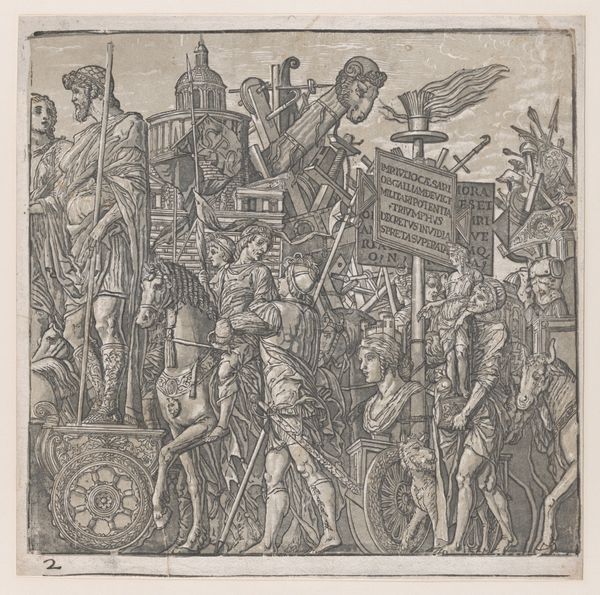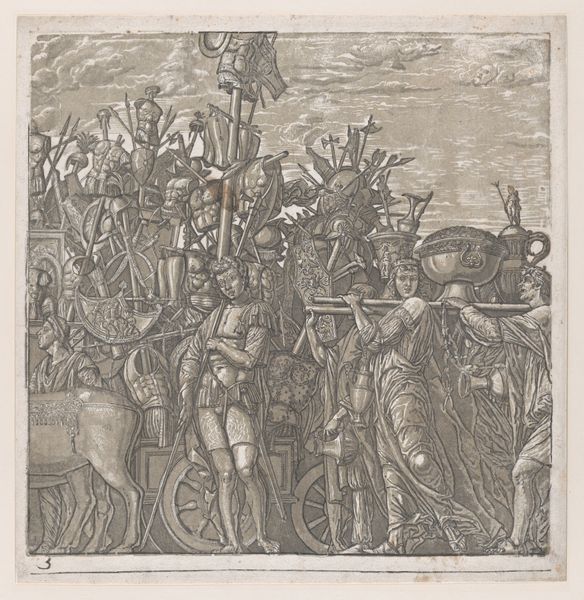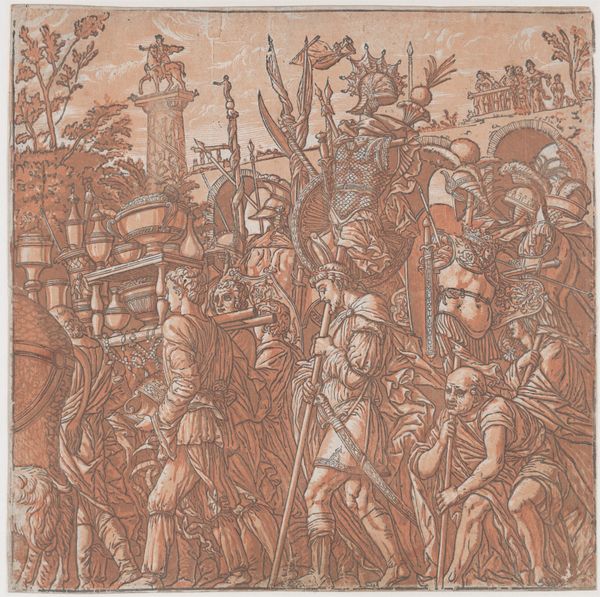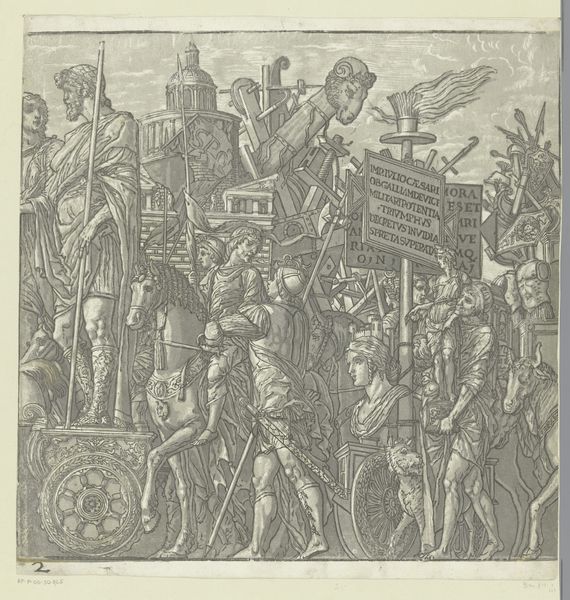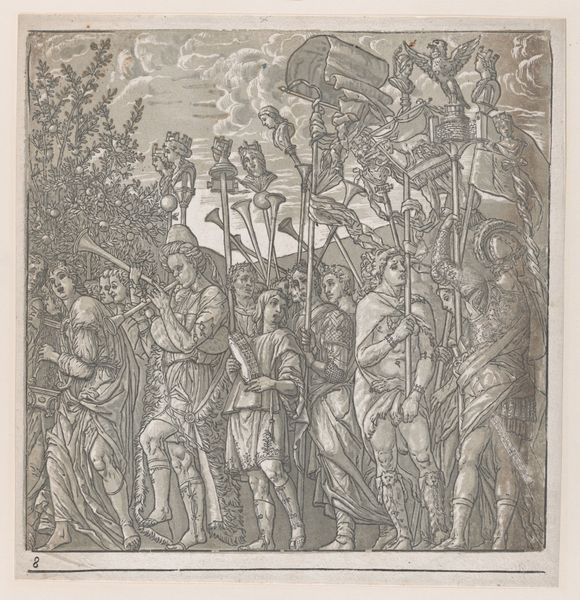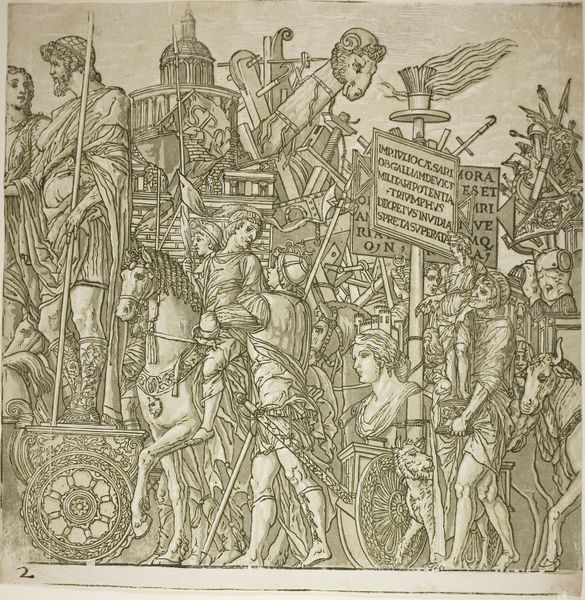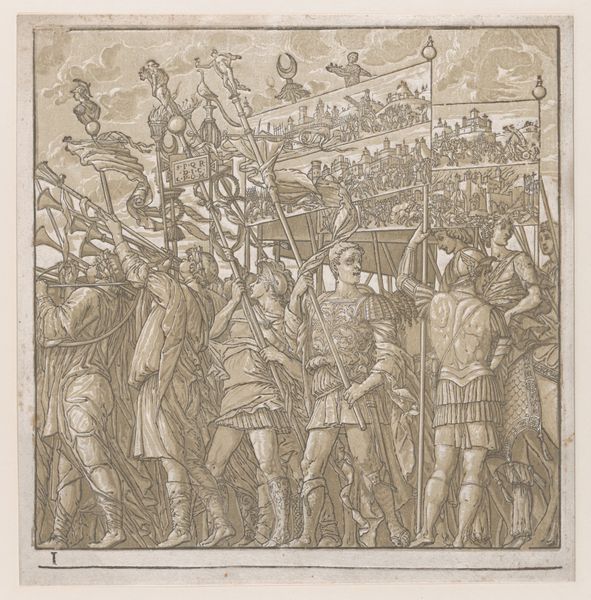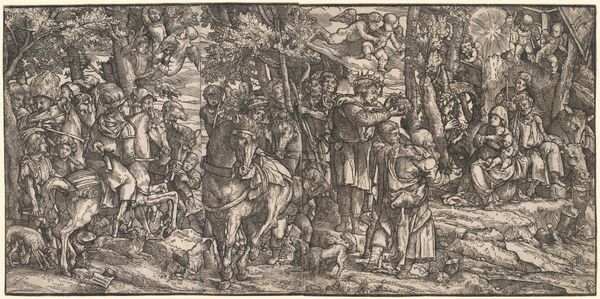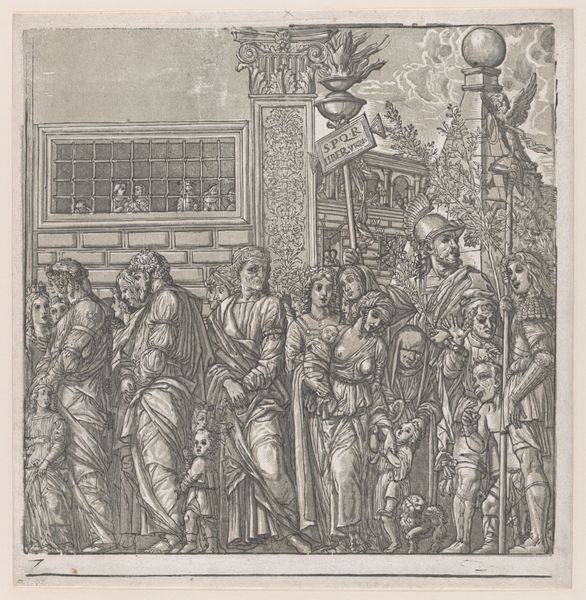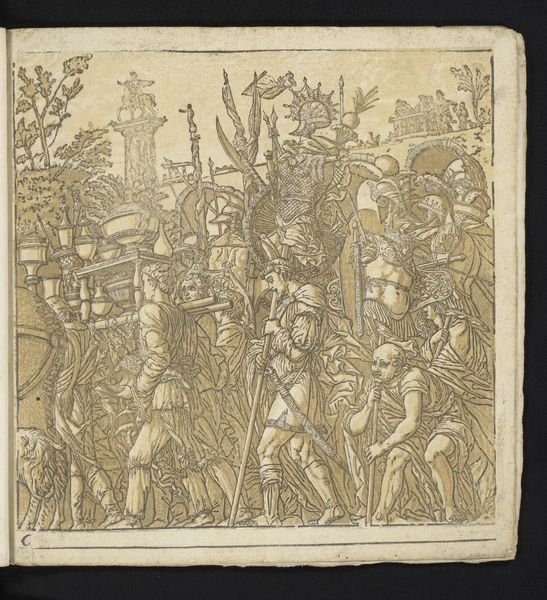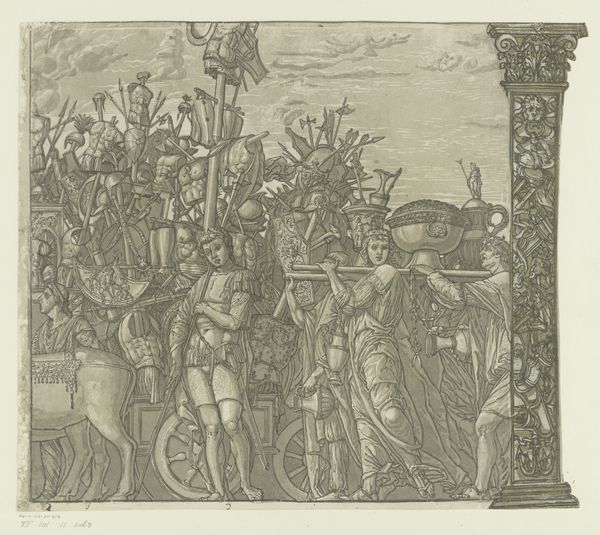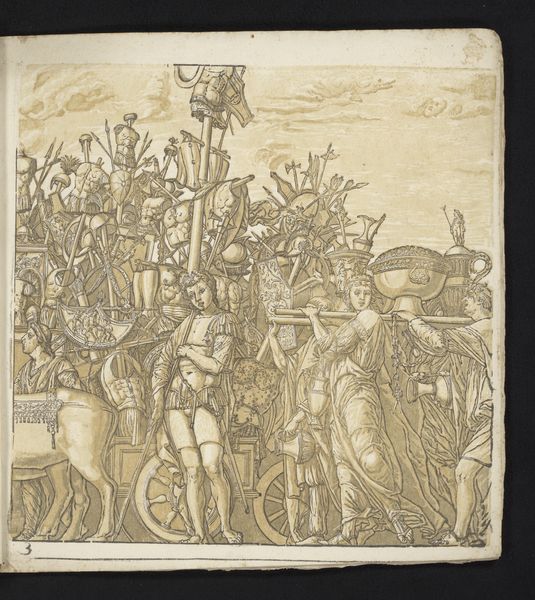
Sheet 6: Men Carrying Trophies, from "The Triumph of Julius Caesar" 1599
0:00
0:00
drawing, print, engraving
#
drawing
#
narrative-art
# print
#
figuration
#
line
#
history-painting
#
italian-renaissance
#
engraving
Dimensions: Sheet: 15 9/16 × 15 3/8 in. (39.5 × 39 cm) Image: 14 7/16 × 14 3/4 in. (36.7 × 37.5 cm)
Copyright: Public Domain
Curator: Looking at Andrea Andreani's print from 1599, "Sheet 6: Men Carrying Trophies, from 'The Triumph of Julius Caesar,'" currently housed at the Met, what strikes you about its execution and the narrative it attempts to portray? Editor: Well, it's an engraving, so already there's a laborious process of carving and printing, and it's quite detailed. I get a strong sense of procession and maybe a little bit of overwhelming excess. What stands out to you in terms of its material qualities and how they shape the meaning? Curator: The printmaking process itself is crucial here. Consider the labor involved in creating this image – the cutting of the woodblock, the repetitive printing. This work reproduces, in multiple, the glory of Caesar. It speaks volumes about the value placed on artistic skill as a means of disseminating power and idealizing consumption. Think about the context of Renaissance workshops—how many hands touched this work? Editor: That's interesting; I hadn't considered it that way. I was initially focused on the figures, but the *act* of creating the image as a method of promoting specific values… Did the intended audience see it this way as well? Curator: Absolutely. It wasn’t just about appreciating the *image* of triumph. It was also about appreciating, even internalizing, the social order. Each print circulated as a tangible representation of this hierarchy, its production deeply embedded in the prevailing material conditions. Note how even the material constraints, such as line and engraving techniques, served to communicate social position, then tell me if those technical means change your interpretation of this procession? Editor: Yes, seeing how labor and process feed into this message shifts my perspective a great deal. I’m no longer just observing the grand parade, but also pondering who benefits from this glorification and how its circulation reinforces those power structures. Curator: Exactly. By investigating its process, we learn not just *what* is represented, but *how* its representation served particular interests. Editor: So, from the material aspect we learn how consumption can influence a work, thanks for opening my eyes on that!
Comments
No comments
Be the first to comment and join the conversation on the ultimate creative platform.
